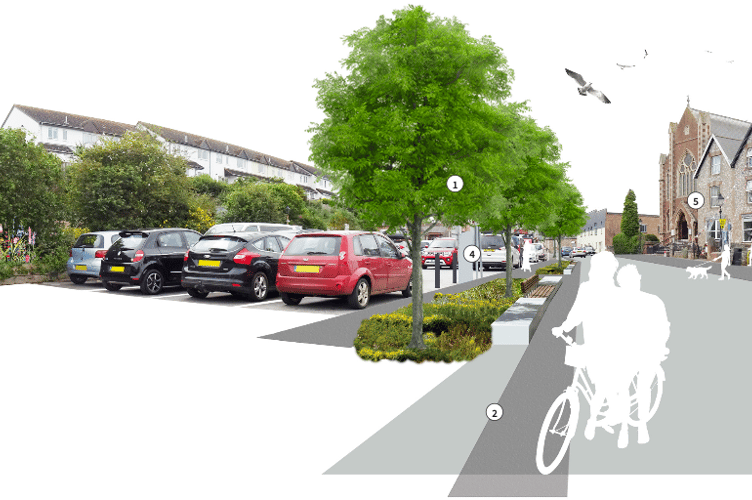CONSULTANTS from Feria Urbanism have published their final report on how the future could look for Watchet.
The consultancy was hired to prepare an urban design strategy for Watchet following last year’s closure of the B3191 road to Blue Anchor due to danger from cliff erosion.
Initial concept ideas were put to a public event in October for people to have their input before a final report was produced.
Now, after more than 50 local individuals and organisations were interviewed, a vision has been produced in a 79-page report which the town council has published on social media.

Feria Urbanism founder Richard Eastham said: “The future of Watchet town centre hinges on a strategic blend of preserving its rich historical heritage while embracing contemporary urban design and sustainability principles in relation to the public realm.
“The town’s unique maritime history and cultural assets provide a strong foundation upon which to build a vibrant and resilient community.
“By leveraging these historical narratives, Watchet can enhance its distinctive identity that attracts visitors, residents, and investors alike.
“Investment in high-quality urban design and public realm improvements will be crucial in enhancing the town’s appeal and functionality.”
Mr Eastham said the opportunity presented by the B3191 closure and the resultant drop in through-traffic movements could be used to deliver pedestrian-friendly environments, integrate green spaces, and ensure accessibility for all age groups.

He said continued community involvement and stakeholder collaboration were essential in driving initiatives forward.
This would ensure that development efforts aligned with the community’s needs and aspirations and would strengthen social cohesion and foster a sense of ownership and pride among residents.
Mr Eastham said: “Economic diversification and sustainable development practices will play a pivotal role in securing Watchet’s long-term prosperity.
“By attracting a mix of businesses, promoting tourism, and supporting local enterprises, the town can build a robust and adaptable economy.
“The future of Watchet town centre lies in a balanced and integrated approach that honours its past while innovatively addressing present and future needs.
“Through strategic planning, community engagement, and sustainable design practices, Watchet can continue its evolution into a thriving, people-friendly town centre that offers a high quality of life for its residents and an inviting destination for visitors and investors.”
Mr Eastham said the report was based on eight principles, the first of which was ‘the need for good first impressions’.
He said: “The importance of a good first impression of a town centre to a first-time visitor cannot be overstated, as it significantly influences their overall perception and future engagement with the area.”
A connected street network incorporating circuits and loops significantly enhanced the appeal and functionality of a town centre, making it a more engaging and attractive destination for residents and visitors.
The ‘walkability’ of a small town centre such as in Watchet, was also ‘a critical factor’, while people-centric urban design and public realm saw increased dwell time and economic activity.
Mr Eastham said Watchet also needed to be friendly to people at either end of the age spectrum.




